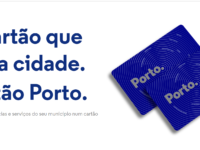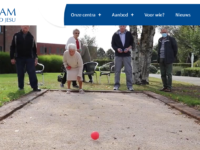The project was born from the need to redesign the Ministry of Education's (MI) decision-making processes. The ITeR application is an organizational and management tool built to suit this purpose. The beneficiaries of the innovation are the MI actors involved in the process, but also the citizens who benefit from the measures being issued more quickly. ITeR is innovative because it enables the cooperation of all actors, keeps track of all documents and greatly simplifies the decision-making…
Innovation Tag: Process Facilitation and Co-design
DYPA, the Hellenic Public Employment Service (former OAED) has developed myDYPAapp, a mobile application that provides citizens with access to DYPA’s online services from their mobile phones. It was launched in February 2021, as an adaptation of DYPA’s services to new needs and modern technology that require the digitization of services, interaction and immediacy in serving citizens’ needs. myDYPAapp is innovative as it includes a wide range of user interaction possibilities with DYPA.
Case Study
Trusted Official Statistics for Good Governance and Evidence Based Decision Making in Vanuatu

The Parliament of Vanuatu has struggled to fulfil its legislative, budget, oversight, and representation functions due to limited capacity to utilise trusted statistics. The Vanuatu Bureau of Statistics addressed this capacity gap through targeted training with Members of Parliament (MPs) and parliamentary civil servants to improve policy making. This is the first focused effort in Vanuatu to introduce data for sustainable development monitoring to MPs with the aim of enhancing good governance.
Case Study
A network-based Competence Centre for Sustainable and Innovative public procurement in Finland
The Finish Government established a network-based Competence Centre for Sustainable and Innovative Public Procurement (KEINO) in 2018. The Centre provides, free of charge, advisory services to public procurers, promotes the strategic importance of procurement competencies in public management, facilitates creation of buyers’ groups among procurers, and disseminates information and good practices. The network consists of five public organisations.
In order to solve the problem of waste accumulation in the city of Nablus, an application was created for drivers of cars affiliated with the Solid Waste Department of Palestine. Many areas in Palestine face the challenge of accumulation of waste in commercial areas, which affects citizens who use the area, and causes traffic congestion during the waste collection process due to the lack of specific paths that take into account the shortest road, priority streets, and waste collection times. The…
The Porto Citizen Card is designed to identify residents, but above all to offer them privileged use of their city, advantages and benefits in accessing experiences and services of the Municipality. With 46,126 active users, the innovation combines a physical card with a digital platform that integrates a website, a cardholder database, and resources to support current and new services. By concentrating several municipal service access and resources in one card, Porto residents are more aware of…
More than 80% of the residents in residential elderly care suffer from unwanted urine loss. This is why care staff check on them regularly, day and night. In order to minimize these disturbing and time-consuming incontinence rounds, the residential care organization Zorg-Saam set out to test new incontinence solutions equipped with sensor technologies that detect when bandages are saturated and alert care staff. With this innovation, supported by the The Programme for Innovation Procurement of…
The UK government launched a new “youth hub” offer of employment services to young people affected by the disruption of the covid-19 pandemic. Through four days of workshops with key stakeholders, which included engaging young people, Impetus ran a theory of change process to enable one of the flagship hubs to co-design their new service to best serve young people. This is the first time that Impetus has applied its theory of change tools, and its impact focus to a government policy…
The UK Government Policy Profession has piloted a new model called Shared Policy Capability Project to support department leaders and policy makers undertake a facilitated self-assessment of their policy environment and identify opportunities for improvement. Through this the government aims to build capability at a department level and enable policymakers to take an active role in improving the environment in which they make policy.
The Unique Scholarship Portal (Portal Único de Becas “Beca tu Futuro”) is a web platform that aims to concentrate all scholarship opportunities in a single portal. In this way, it documents and manages everything from the publication of the call for applications to the awarding of scholarships. The portal benefits all the citizens of the Dominican Republic who wish to apply for a scholarship. Moreover, the portal serves as a management tool for the scholarships' evaluators and the…





